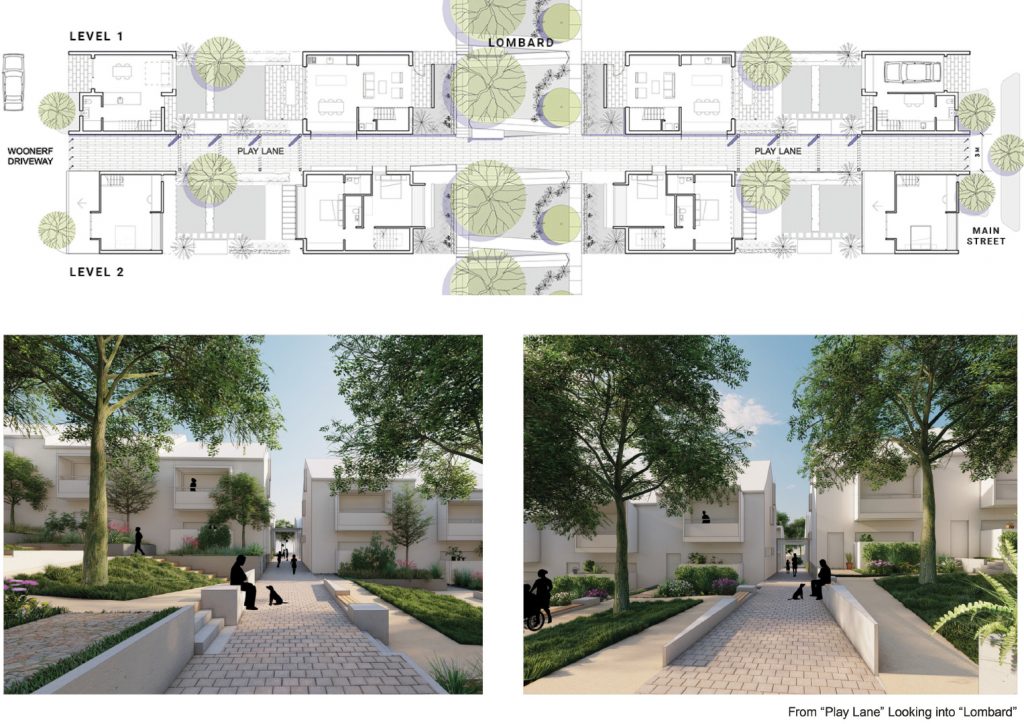“Lombard” Terrace Streets
Peter Willett, Sarah Gan-Brown, Lorraine Yuelei Li, Cindy Lin and Jessica Yue Wang
Finding public space in suburbia
The Covid-19 pandemic has emphasised the need for public open space that is easily accessible to communities in self isolation, without getting into the car. By recreating the rear lanes of the inner city as shared pedestrian zones, called Woonerfs in Dutch, the main street address can be relocated as a shared communal space without cars.
In particular, steeper streets, between 1:10 to 1:20 slopes can be transformed into an ambulatory version of San Francisco’s famous “Lombard Street,” a semi-public space that encourages greater interaction between residents. As the main dwellings front a ramped pedestrian space, the “Lombard” provides universal access to each dwelling, with slopes suitable for wheelchairs and prams. The character of “Lombards” can vary from productive vegetable gardens, to native wetland alternatives. Three metre wide “Play Lanes” provide a safe surface for children to play, with netted pergolas for shade, that break up the row housing every 36 metres.
Intergenerational housing can help provide more affordable housing and enhances the ability for young and elderly to interact, enriching community life. Different scenarios could see younger generations moving into the detached studio and occupying the car space as a living room if they were to start a family. The street is transformed from carpark to community park.
